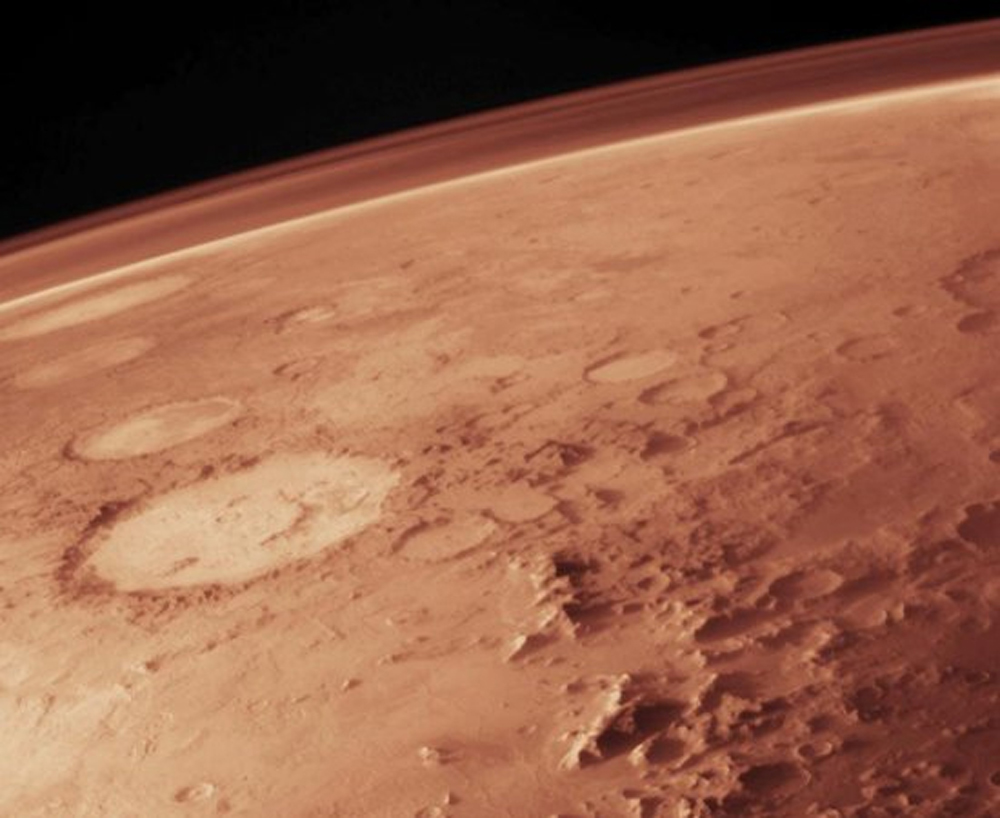Why Mars Lightning Is Weak and Rare
If it exists at all, that is.

If lightning exists on Mars, it may be less energetic and frequent than lightning on Earth, all because of the Red Planet's thin air, a new study finds.
Scientists announced the first evidence of lightning on Mars in 2009, after they detected microwave emissions from a 2006 dust storm on the Red Planet that the researchers suggested came from sudden, huge electrical discharges.
However, subsequent research failed to find radio evidence of lightning in Martian dust storms, despite five years of data collected by Europe's Mars Express spacecraft and three months of data from the Allen Telescope Array in California.
RELATED: The 7 Biggest Mysteries of Mars
To investigate why thunderbolts are rare on Mars, scientists focused on the kind of lightning that dust storms could generate. Sand grains and other particles in these storms can build up electric charge through the "triboelectric effect," the same effect behind everyday static electricity. When two objects repeatedly collide with or rub against one another, the surface of one material can steal electrons from the surface of the other, accumulating charge.
In the new study, scientists experimented with grains of basalt, a dark volcanic rock common in the crust of Mars. The researchers placed spherical grains about 1 to 2 millimeters wide on a plate that vibrated for 30 minutes to generate triboelectric charge. Scientists extracted grains from a hole in the center of the plate to measure their level of electric charge.
The researchers varied the air pressure in the chamber in which the experiment took place from 0.03 millibars to 80 millibars. In comparison, the average atmospheric pressure on Mars is 6 millibars, ranging from less than 1 millibar at the highest Martian volcanic peaks to more than 10 millibars in the Red Planet's deep valleys. On Earth, the average atmospheric pressure is about 1,000 millibars at sea level.
Get the Space.com Newsletter
Breaking space news, the latest updates on rocket launches, skywatching events and more!
The scientists found that electric charge had difficulty accumulating on the basalt grains at low air pressures. All in all, the electric charge on the grains at Martian air pressure was at least five times smaller than at the highest pressure tested, and it was smaller still compared to the average atmospheric pressure at sea level on Earth. Essentially, at the atmospheric pressure on Mars, "tribocharging works the least for sand-sized grains," study lead author Gerhard Wurm, a planetary scientist at the University of Duisburg-Essen in Germany, told Space.com.
On Earth, other phenomena, such as cosmic rays from deep space or ultraviolet radiation from the sun, can also generate the electric charge needed for lightning. However, these mechanisms are likely not strong enough on Mars to help generate lightning there, Wurm said.
The scientists detailed their findings in the October 2019 issue of the journal Icarus.
- Surprise! Jupiter's Lightning Looks a Lot Like Earth's
- Photos: Earth's Lightning Seen from Space
- Photos: Red Planet Views from Europe's Mars Express
Follow Charles Q. Choi on Twitter @cqchoi. Follow us on Twitter @Spacedotcom and on Facebook.
Join our Space Forums to keep talking space on the latest missions, night sky and more! And if you have a news tip, correction or comment, let us know at: community@space.com.

Charles Q. Choi is a contributing writer for Space.com and Live Science. He covers all things human origins and astronomy as well as physics, animals and general science topics. Charles has a Master of Arts degree from the University of Missouri-Columbia, School of Journalism and a Bachelor of Arts degree from the University of South Florida. Charles has visited every continent on Earth, drinking rancid yak butter tea in Lhasa, snorkeling with sea lions in the Galapagos and even climbing an iceberg in Antarctica. Visit him at http://www.sciwriter.us









